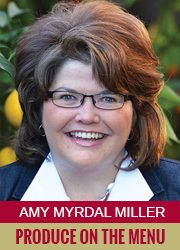 In mid-February I attended the Sacramento Business Journal Healthcare Leadership Forum, where a panel of chief executives of major hospitals, insurance companies and managed care organizations discussed the future of healthcare. Despite the uncertainty created by all the “repeal and repair/replace” talk in Washington, D.C., this group quickly reached consensus on one important issue: if we’re going to control healthcare costs in this country, we need to put more emphasis on prevention.
In mid-February I attended the Sacramento Business Journal Healthcare Leadership Forum, where a panel of chief executives of major hospitals, insurance companies and managed care organizations discussed the future of healthcare. Despite the uncertainty created by all the “repeal and repair/replace” talk in Washington, D.C., this group quickly reached consensus on one important issue: if we’re going to control healthcare costs in this country, we need to put more emphasis on prevention.
As a registered dietitian/nutritionist who works closely with many major foodservice leaders, I started thinking about ways to shift the consumer mindset when it comes to eating healthy in restaurants. On average, we eat about 20 percent of our meals in restaurants today; yet we still think of eating out as a “treat.”
Datassential, a leading foodservice market research firm in Chicago, recently conducted a consumer study on behalf of members of The Culinary Institute of America Healthy Menus R&D Collaborative that focused on determining drivers and barriers to healthy eating in quick-service and fast-casual restaurants. Collaborative members include culinary and nutrition professionals from top chain restaurants and contract foodservice companies in the United States. Collectively, Collaborative members feed more than 100 million Americans every day.
Members of the Collaborative wanted data to help them identify what could compel their customers to more often order a more healthful, better-for-you choice. Here’s what they discovered.
Nearly half of people who eat in a quick-service restaurant — QSR, think McDonald’s, Taco Bell, Subway, Chick-Fil-A — at least once a week earn less than $50,000 per year. When they are looking for healthy menu options, they need affordable options. Their primary reason for choosing a QSR is to satisfy hunger, followed by getting great-tasting food. Health is not a driver for most people visiting a QSR; 40 percent say they go because they have a craving for a treat, and they know what they’ll order before they get to the restaurant.
Nearly 40 percent of people who eat at a fast-casual restaurant — FCR, think Chipotle, Panera Bread — at least once a week earn less than $50,000 per year. They too report their primary reason for choosing this style of restaurant is to satisfy hunger and get great-tasting food, but they are willing to spend slightly more to get food that is perceived to be fresher, better quality and more healthful. Any restaurant that communicates messages about “freshness” and displays lots of vegetables is perceived to be a better, healthier option.
If we are going to control healthcare costs in this country, we need to put more emphasis on prevention.
When survey respondents were asked what enables them to make a healthier choice, many reported their intent is stronger earlier in the day. This may present opportunities to feature more produce at breakfast, but operators need to pay attention to sensory cues. Appealing menu descriptors, beautiful photos of healthy items on menus and menu boards, nutrition information and enticing aromas are all cues that can motivate a diner to make a more healthful choice. The Datassential research shows that Millennials, people with incomes greater than $75K and diners eating early in the day (7-9 a.m.) are most likely to be persuaded to eat healthy by menu language, photos, nutrition data and aroma cues.
When asked what the top barriers to eating healthy at a QSR or FCR, the top responses were eating out is a treat, it’s not a time I want to eat healthy; cost of healthy options; and too few healthy options available. Of these, the biggest opportunity for menu developers is to provide a greater variety of healthy options featuring fresh ingredients, especially vegetables. But health-seeking diners want more than salads.
Datassential also looked at factors that create the perception of healthy. The list includes the ability to customize orders, freshly prepared food, and the use of lots of vegetables and lean proteins. Freshness is the Number One cue that something is healthy, but this can mean fresh produce, as well as freshly baked bread or fresh, never frozen, ground beef.
What do people who want to eat healthy tend to order at QSRs and FCRs? The top responses were salads, sushi, soup, bowls and cold sandwiches. All these menu items can prominently feature vegetables. But let’s not limit healthy menu innovation to these categories. If we’re going to put more emphasis on prevention in this country, we need to give people more opportunities to make a healthy choice. And that choice needs to be a competitive choice, one that is more appealing and on par price-wise with the conventional, less healthful option.
We need to create healthier menu items that meet diners’ tendency to think of eating out as a “treat.” Someone else is doing the cooking, someone else is doing the dishes and I can feel good knowing I just ate something delicious, as well as healthful.
Amy Myrdal Miller, MS, RDN, FAND is a farmer’s daughter from North
Dakota, award-winning dietitian, culinary nutrition expert, and founder and president of Farmer’s Daughter Consulting, Inc. Learn more about her business at www.farmersdaughterconsulting.com. Follow her insights on food and flavor issues on Twitter @AmyMyrdalMiller.




